Search the Special Collections and Archives Portal
Search Results
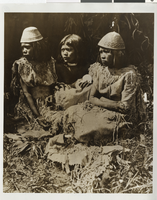
Photograph of Native American women, 1900-1910s
Date
1900 to 1919
Archival Collection
Description
Three Native American women sitting on the ground with two of them donning traditional, hand woven hats.
Image

Photograph of Native American woman, 1900-1910s
Date
1900 to 1919
Archival Collection
Description
A Native American woman standing by a hand woven traditional basket.
Image
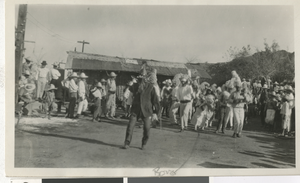
Photograph of performers at a festival, (Mex.), 1900-1920
Date
1900 to 1920
Archival Collection
Description
Mexican festival dancers in the city streets. Dancers wear head ornaments or masks. Inscription reads: "This only shows the clown who has a face of an evil spirit, also the boy child who has to be dressed as a girl to represent no sex."
Image
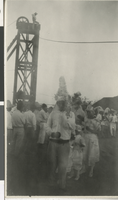
Photograph of festival dancers, (Mex.), 1900-1920
Date
1900 to 1920
Archival Collection
Description
Mexican festival dancers wear large headresses made of flowers. Behind them, a man stands on a large metal structure.
Image
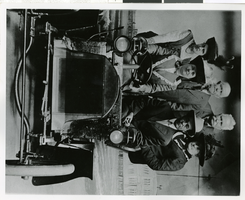
Photograph of Ely residents in a car, 1900-1910
Date
1900 to 1910
Archival Collection
Description
Men and women from Ely, Nevada pose for a group photo while sitting in a car without a roof. Original description: "Group of Elyites at Salt Lake Palisade."
Image
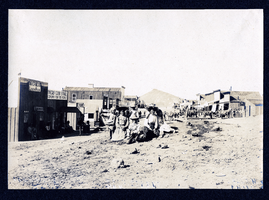
Photograph of women and children posing on Main Street, Goldfield (Nev.), early 1900s
Archival Collection
Description
Caption: No. 4 [?]
Site Name: Inverness Lodging House (Goldfield, Nev.)
Miners' Cash Store (Goldfield, Nev.)
Site Name: Inverness Lodging House (Goldfield, Nev.)
Miners' Cash Store (Goldfield, Nev.)
Image
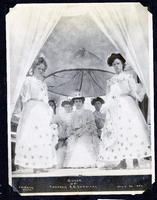
Photograph of Queen and Court of Tonopah Railroad Carnival, Tonopah (Nev.), early 1900s
Date
1904-07-25
Archival Collection
Description
[Miss Belle Pepper was crowned]
Caption: Queen of Tonopah R.R. Carnival
Caption: Queen of Tonopah R.R. Carnival
Image

Photograph of Southern Paiute women, early 1900s
Date
1900 to 1920
Archival Collection
Description
Transcribed from photograph, "Southern Paiute - 8. Ilee Castillo and Imogene Domingo, with baby in Southern Paiute dress. Inter-Tribal Council of Nevada. Courtesy of University of Nevada - Las Vegas Library Collection."
Image
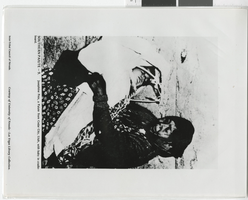
Photograph of Josephine Pete with baby, early 1900s
Date
1900 to 1920
Archival Collection
Description
Transcribed from photograph, "Southern Paiute - 9. Josephine Pete, a Paiute from Cedar City, Utah, with baby in cradleboard. Inter-Tribal Council of Nevada. Courtesy of University of Nevada - Las Vegas Library Collection."
Image
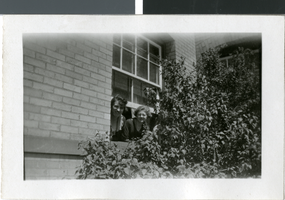
Photograph of two women looking out a window, early 1900s
Date
1900 to 1925
Description
Two unidentified women look out of a window of a house. A tree is nearly blocking their view.
Image
Pagination
Refine my results
Content Type
Creator or Contributor
Subject
Archival Collection
Digital Project
Resource Type
Material Type
Place
Language
Records Classification
